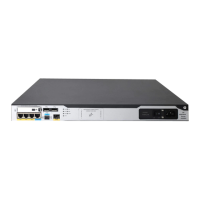44
C and Router D and specify Router B and Router C as the RPF neighbors of Router C and Router D,
respectively. In this way, the receiver hosts can receive the multicast data from the multicast source.
NOTE:
static multicast route is effective only on the multicast router on which i
is configured, and will not be
advertised throughout the network or redistributed to other routers.
Multicast forwarding across unicast subnets
Routers forward the multicast data from a multicast source hop by hop along the forwarding tree, but
some routers might not support multicast protocols in a network. When the multicast data is forwarded
to a router that does not support IP multicast, the forwarding path is blocked. In this case, you can enable
multicast forwarding across two unicast subnets by establishing a tunnel between the routers at the edges
of the two unicast subnets.
Figure 18 Multicast data transmission through a tunnel
As shown in Figure 18, a tunnel is established between the multicast routers Router A and Router B. Router
A encapsulates the multicast data in unicast IP packets, and forwards them to Router B across the tunnel
through unicast routers. Then, Router B strips off the unicast IP header and continues to forward the
multicast data to the receiver.
To use this tunnel only for multicast traffic, configure the tunnel as the outgoing interface only for multicast
routes.
Multicast routing and forwarding configuration task
list
Tasks at a
lance
(Required.) Enabling IP multicast routing
(Optional.) Configuring multicast routing and forwarding:
• (Optional.) Configuring static multicast routes
• (Optional.) Configuring the RPF route selection rule
• (Optional.) Configuring multicast load splitting
• (Optional.) Configuring a multicast forwarding boundary

